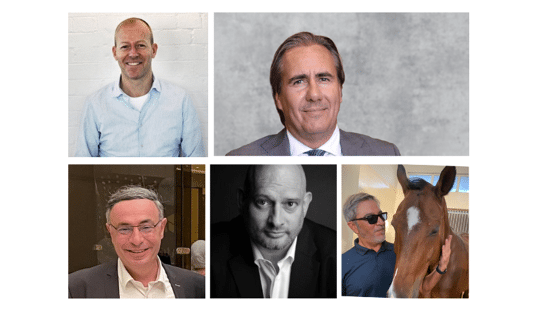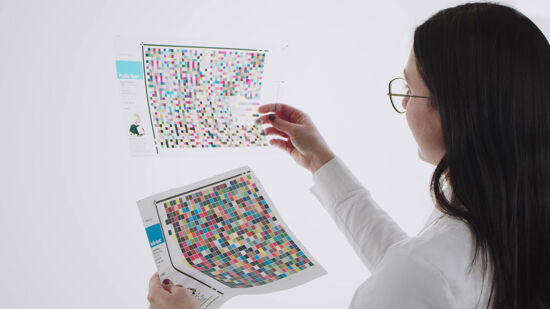How can printers enter the short run label print market?

Sonja Angerer discusses the rise of short run label printing. The sector is estimated to reach 47 billion USD worldwide in 2024 and increase to 67 billion USD worldwide by 2028. Sonja shares how printers can enter this market and the opportunities for them.
According to analysts from Research and Market in 2023, they estimate that label printing will develop significantly in the coming years.. In their Print Label Global Market Report 2024, they estimate the sector will increase to approximately 67 billion US dollars worldwide by 2028, this is an estimated annual growth of almost 5%.
Therefore, label printing is progressing with the broader packaging market. This also includes printing on corrugated, cardboard, flexible materials such as paper, and rigid materials and objects such as bottles, plastic or metal. Regarding the packaging market, which is currently estimated at around USD 365 billion, Global Market Insights expects a CAGR of 5% until 2032.
 Caption: The recently introduced Epson label printer ColorWorks C8000e prints full-colour labels at up to 300 mm/s on paper, films and plastics. Image Credit: Epson
Caption: The recently introduced Epson label printer ColorWorks C8000e prints full-colour labels at up to 300 mm/s on paper, films and plastics. Image Credit: Epson
Big players dominate the market
Today, colour labels are produced using various methods including analogue processes like offset and flexographic printing, digital inkjet, e-ink, toner printing, and hybrid approaches. Hybrid labels usually involve the basic parts of the design created with analogue technology, while local or seasonal variations are added using digital print.
Packaging for fast-moving consumer goods, such as certain foodstuffs, is often produced in millions of copies. The world's largest packaging printers are often located outside the European Union, for example in the USA, India and, increasingly, China.
Label printing in small quantities, on the other hand, is more regional, in production as well as in demand. Web2Print plays an increasingly important role. Providers such as Labelprint 24 , Labelisten or Etiketten-drucken offer a wide variety of different labels in short print runs. Online print shops with broader product ranges, such as Wirmachendruck, also offer a large selection of labels on rolls or sheets.
Online providers cater to a diverse target group, ranging from private customers and local associations to reach industry and smaller companies. As a result, print data is often not delivered in professional quality.
Online editors try to anticipate and resolve data delivery problems with online editors, where customers may design labels directly in the browser. In the background, the software creates a printable PDF, already optimized for the selected printing press.
 Caption: Labels in short runs are also becoming increasingly important for the food industry. Image credit: S. Angerer
Caption: Labels in short runs are also becoming increasingly important for the food industry. Image credit: S. Angerer
Small Labels 1x1
Stickers, whether from a roll or on sheets, are always constructed in the same way (from bottom to top):
- Carrier material (liner)
- Adhesive layer
- Carrier/label material.
In addition, there often is a protective layer such as a laminate or varnish. The carrier material ensures that the label can be easily removed, using a silicone layer. The adhesive layer, typically made from acrylic or rubber, is available as removable, semi-permanent and permanent adhesive. In some cases, labels in small quantities may also use cling film as a base.
When selecting label print materials, there is a choice between paper-based and plastic films. For outdoor use and for a humid environment, films made from PET, PE and PP are required. If the label needs to be seawater-resistant, PVC is usually the first choice. Label print, recycled, dyed, metallised or natural paper is best suited for a dry indoor environment.
Especially for labels in short runs, it is also important to consider other requirements. For example, laminate or varnishing can mean that a label is no longer suitable to be written on or marked with a thermal transfer printer. This can become a significant issue if a best-before date needs to be added later.
How to enter the label market
Many printers already own the required machinery to enter the label print market, as self-adhesive films can be printed with UV-curable, Latex, Eco Solvent or water-based inks on any roll-to-roll printer. With a print-and-cut device, such as those from the Roland DG Tru VIS LG and LM series, this can even be done inline. After all, there is not that much of a difference between a sticker and a label.
Machinery designed specifically for label printing in short runs, usually work with pre-cut substrates on rolls. For example, the recently introduced Epson ColorWorks C8000e prints labels from 2.5 to 10 cm wide in full colour at up to 300 mm/s on paper, foils and plastics.
However, label printing, even in small print runs is not entirely about technical equipment. Labels intended for food or cosmetics must meet certain requirements. For example, inks must be low-migration and non-toxic. In addition, packaging printing is also facing increased demand for green and sustainable products.
There are numerous PVC-free films and papers made from renewable raw materials such as grass or bamboo for label printing. However, for small print runs, the customer base is often highly price sensitive.
 Caption The Franconian online label printer Labelisten offers short-run labels and pouches. Image credit: S. Angerer
Caption The Franconian online label printer Labelisten offers short-run labels and pouches. Image credit: S. Angerer
Is it worth getting started with label printing in short runs?
Packaging and label printing are among the few segments in the printing industry that are expected to continue to grow in the coming years. Smaller household sizes and growing requirements for product safety and labelling ensure that short-run labels will continue to be in demand.
This results in an exciting opportunity for printers, especially those that can act as a sustainable supplier for local production companies. Label printing can also be a good way for printers with an existing Web2Print offering to expand their range of products and services in an uncomplicated way and thus expand their revenue.
To discover the latest content that covers a wide range of sectors including label printing and digital printing sign up for FESPA’s free monthly newsletter FESPA World available in English, Spanish and German.
Interested in joining our community?
Enquire today about joining your local FESPA Association or FESPA Direct
Recent news

Current and future trends, the power of AI and how to do business in Saudi Arabia and Africa
FESPA Middle East 2025 will return to Dubai from 20 – 22 January at the Dubai Exhibition Centre. During this 3-day event insightful and educational sessions will be running during a 3-day conference programme that will offer useful insights and trends for those in the speciality and signage sectors.

What are the opportunities for printers regarding backlit displays and window graphics?
Nessan Cleary describes the various opportunities for printers regarding window graphics. There is a wide range of materials and lighting options available.

